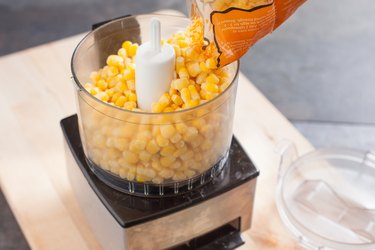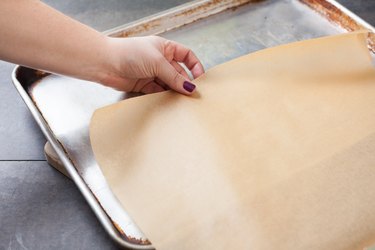
Sweet, golden maize is a quintessential American ingredient, and it's given pride of place in a number of favorite regional dishes. Corn casserole is one of those, a cheerfully sunshine-hued side dish that pairs equally well with midwinter pot roast or summertime grilled meats. The basic recipe can be tweaked in numerous ways, fine-tuning it to match your family's taste or complement a specific meal.
Basic Casserole or Pudding
Video of the Day

The most basic versions of corn casserole require just corn, cream and seasonings. Cut the kernels from your corn, leaving a generous allowance clinging to the cob. Use a spoon or the back of your knife to scrape the sweet, creamy "milk" from the cobs into your mixing bowl, along with the kernels. If you don't have fresh corn, pulse canned or thawed frozen kernels in your food processor. Place half in your bowl, and then press the milk from the remainder using a colander or cheesecloth bag. Add enough heavy cream to cover the corn, and then season the mixture generously with salt and pepper. Some recipes add an egg, for a more pudding-like texture, but that's not necessary. Bake for approximately 40 to 45 minutes, until the casserole is slightly thickened.
Video of the Day
Cornbread or "Spoon Bread" Version

For a more substantial casserole, incorporate cornmeal into the mixture. Some recipes start from scratch with both fresh corn and cornmeal, and sometimes flour, but the convenience of using a cornbread or corn muffin mix makes it a quicker dish to prepare. Most call for whole-kernel and creamed corn, a boxed cornbread mix and eggs. Butter and sour cream add richness to the canonical version of this recipe, though you can substitute margarine and plain yogurt to reduce its caloric impact. Bake the mixture until it sets, usually 35 to 40 minutes. The end result is essentially a corn-rich "spoon bread," a textural happy medium between polenta-like grits and standard cornbread.
Customizing Your Own

The standard-issue corn casserole is tasty enough on its own, but it also provides a blank canvas to stimulate your culinary creativity. At light lunches, for example, you can upgrade your casserole with diced vegetables and fresh herbs and serve it as the sole, self-contained side dish. With the addition of diced meats, cheese or cooked beans, it can serve as a light meal by itself. Colorful diced peppers, jalapeno rings and Monterey jack transform the same basic casserole into a Southwestern side dish, or serve it at breakfast with an egg on top and bacon or ham on the side.
A Few Practical Points

As with any casserole that starts off wet and sloppy, it's best to use a baking dish that leaves extra space at the top. This limits the risk of your casserole boiling over and causing a smoky, sticky mess in the oven. If this isn't an option, line a sheet pan with parchment paper for ease of cleanup, and place your casserole dish on top of the sheet for baking. The pan will trap any overflow. Spray the pan well, especially at its edges, to reduce sticking and make it easier to clean after the meal is over.